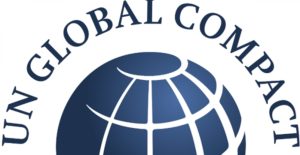Global compacts provide hope for refugees
 The two recently forged global compacts on migration and refugees are a new best hope for a solution to the global refugee crisis, a conference on refugees heard this week.
The two recently forged global compacts on migration and refugees are a new best hope for a solution to the global refugee crisis, a conference on refugees heard this week.
The Refugee Alternatives Conference, held at Melbourne University, heard that the key objectives of the two compacts were to: ease the pressure on host nations; promote refugee self-reliance; explore new solutions to displacement; and, address the causes of displacement.
The compacts stem from a meeting in September 2016 at the UN headquarters in New York; a global Summit for Refugees and Migrants, that drew together leaders of the world’s governments to discuss a more coordinated and humane approach to large movements of people.
Australia’s Prime Minister Malcolm Turnbull was among the leaders present to sign on to the New York Declaration for Refugees and Migrants.
This Declaration was adopted unanimously by all 193 UN member states. In the Declaration, all UN member states reaffirmed the importance of adhering to the international protection regime (including international human rights law and the Refugee Convention), acknowledging that the protection of refugees and assistance to host states are a shared international responsibility.
Although a few nations, including the US have since withdrawn.
The nations have committed themselves to sharing responsibility in line with respect for human rights and fundamental freedoms.
They have committed to increase efforts to address root causes of displacement through preventative diplomacy and increased support to countries of origin.
The nations have pledged to strengthen and facilitate a well-funded emergency response and a smooth transition to sustainable approaches that invest in resilience of both refugees and local communities.
They have acknowledged the obligation for states to take steps against racism and xenophobia, and implement measures to ensure access to opportunities and improve inclusion; and commit to providing additional and predictable humanitarian funding and development support, making explicit reference to including refugees and migrants in the 2030 Agenda for Sustainable Development.
The compacts acknowledged the rights of states to manage and control borders, but in conformity with international law, and with reaffirmation of the principle of non-refoulement.
They affirm the need to review policies that criminalise cross-border movement and pursue alternatives to detention, particularly child detention; and also the importance of providing access to all levels of education and make specific commitments to refugee and migrant women and girls, children, and others with specific needs.
The compacts committed nations to expanding the number and range of legal avenues for refugees to be admitted to third countries, including through increased resettlement and complementary pathways, including labour mobility, family reunion, private sponsorship and education pathways.
As part of the New York Declaration, UN states agreed to support UNHCR to develop a Comprehensive Refugee Response Framework (CRRF) in response to each large movement of refugees.
The CRRF, which is now being trialled in a number of countries in Africa and Latin America, focuses on key four aspects: reception and admission; support for immediate and ongoing needs; support to host countries and communities; and, durable solutions for refugees.
The UN plans to have the two Compacts agreed by the end of 2018.
Laurie Nowell
AMES Australia Senior Journalist












